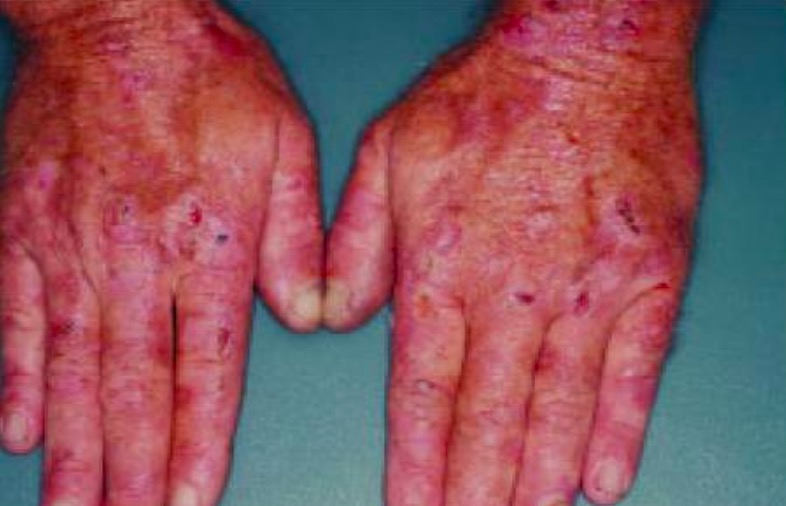Playlist
Show Playlist
Hide Playlist
Porphyria: Diagnosis and Management
-
Reference List Pathology.pdf
-
Slides Porphyria Diagnosis and Management.pdf
-
Download Lecture Overview
00:01 So how do we make the diagnosis? If you suspect it, then you would easily just look at urine or serum for the presence of the upstream precursors, the porphobilinogen. 00:14 It's going to be one of the earliest compounds in the series of the metabolites, and it's fairly easily detected. 00:23 You can get a hint because the patient will come in and say, you know, my urine starts yellow, turns dark brown. 00:29 Mm. Interesting. So that may give you a clue, but that's a little bit nonspecific. 00:34 If you want to you can detect the porphobilinogen in stool. 00:39 Although usually urine or blood is fine. 00:42 To confirm the diagnosis, we would test specifically for the suspected enzymatic defect. And we have we can do a variety of tests to kind of tease out whether it's very early in the synthetic pathway, or much later in the synthetic pathway in which enzyme is involved. 00:57 The image that's shown is a histology slide from a blister in a patient with porphyria cutanea tarda, and it is a subepidermal blister, so the basal layer has gone up. 01:11 The blister is between that basal layer and the underlying basement membrane, and there is going to be fluid electrolyte, the very rarely occasionally inflammatory cell. And these blisters tend not to break easily. 01:28 And so risk for infection is relatively low. 01:32 But they're clearly blistering lesions and can cause additional problems. 01:37 How do you manage this? Well, there's no known cure for porphyria, again, with a lot of genetic diseases. 01:44 Once we get really good at genetic therapy, we may be able to fix it, but we can avoid we try to avoid triggers, things that can drive down the synthesis of the enzymes that are necessary for making the final heme product, or drive down the thing that's going to cause free radical damage, which is sunlight. So avoid alcohol that will keep your heme synthesis up. 02:10 Avoid sunlight that will keep down the free radical damage. 02:15 You can reduce iron. Kind of an interesting thought because you will reduce heme synthesis. Now you may be a little anemic, but that's a possibility for patients who have severe hepatic defects and therefore not going to ever make a lot of the heme you can give, you can administer heme. 02:33 And there's a feedback inhibition on all those enzymatic pathways and then managing the underlying disease. So if they have hepatitis try to manage that. 02:44 And with that we have concluded a discussion of the porphyrias at least two of them. 02:49 And giving you kind of an interesting historical insight as well.
About the Lecture
The lecture Porphyria: Diagnosis and Management by Richard Mitchell, MD, PhD is from the course Blistering Skin Disorders.
Included Quiz Questions
What characteristic change occurs in the urine of patients with porphyria after standing?
- Changes from yellow to red-brown
- Changes from clear to cloudy
- Changes from yellow to green
- Becomes fluorescent
- Remains unchanged
What is the characteristic location of blisters in porphyria cutanea tarda?
- Subepidermal
- Intraepidermal
- Within the dermis
- Between dermis and subcutis
- Within the stratum corneum
Which intervention is appropriate in the management of porphyria?
- Avoidance of alcohol and sun exposure
- Increased iron supplementation
- Regular UV light therapy
- High-dose vitamin D supplements
- Aggressive exercise regimen
Customer reviews
5,0 of 5 stars
| 5 Stars |
|
5 |
| 4 Stars |
|
0 |
| 3 Stars |
|
0 |
| 2 Stars |
|
0 |
| 1 Star |
|
0 |




